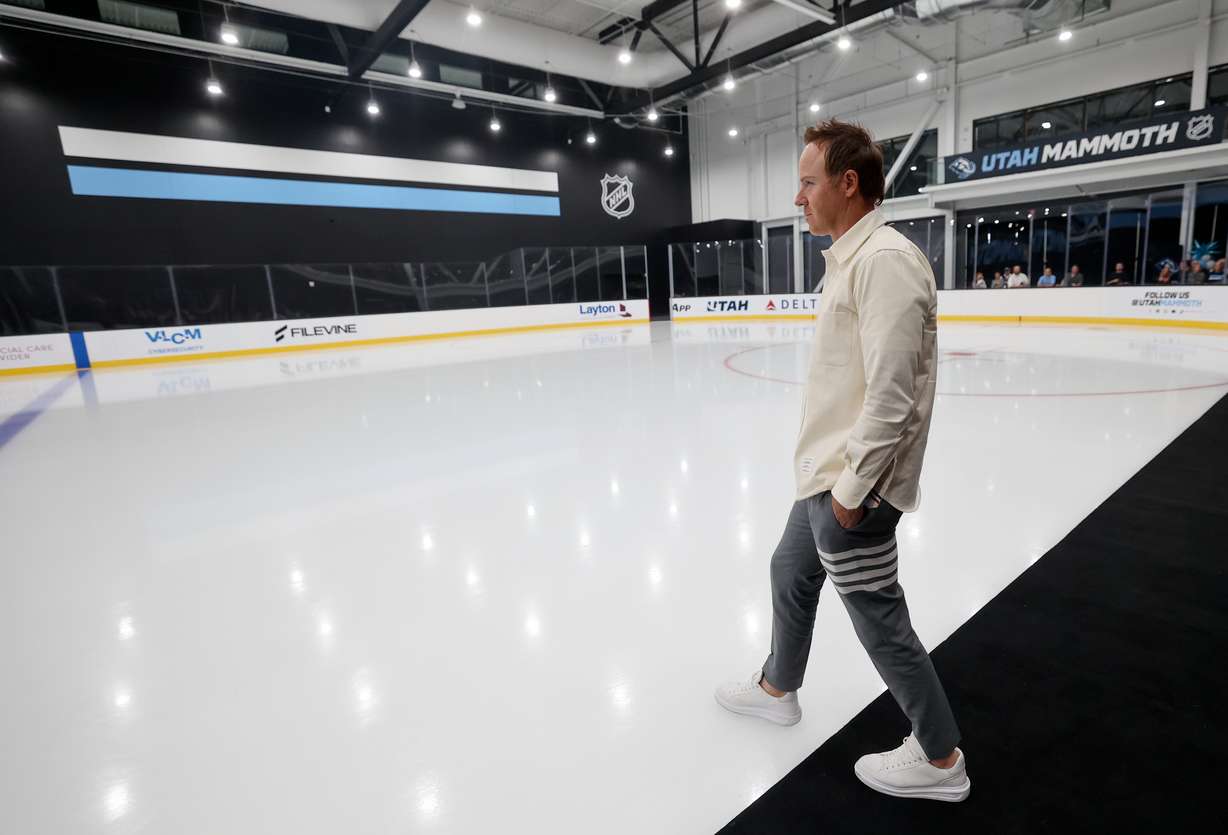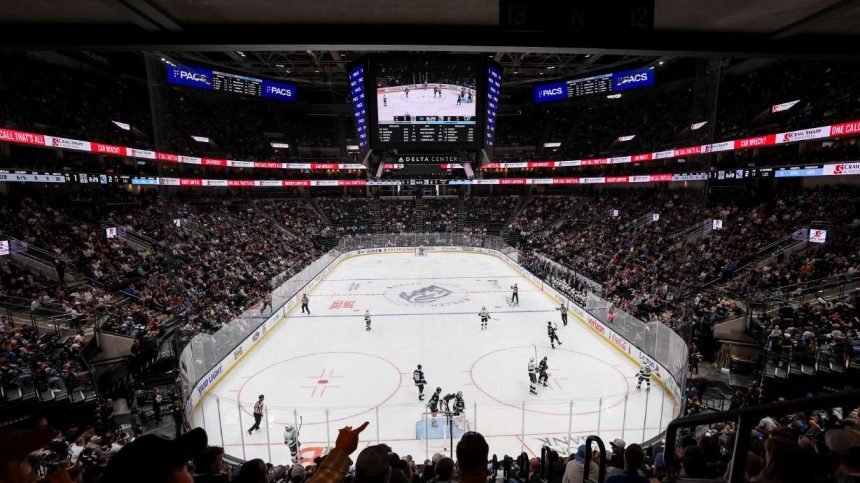SALT LAKE CITY — Sports tourism continues to be a large draw in Salt Lake County and across the U.S., and local tourism officials say they believe it’s only going to continue as the Utah Mammoth and potentially more teams enter the region’s realm.
That, in turn, can be large for the county’s economy.
“Tourism is the front door to economic development,” said Kaitlin Eskelson, president and CEO of Visit Salt Lake, the county’s tourism wing, as she welcomed people into the county’s annual Sports Tourism Summit Thursday morning. “Every time we welcome a major sporting event, convention or leisure travel every year, it brings in new dollars to our community. … They expand our economy rather than circulate within it.”
The sports side of the tourism industry is often broken up into two camps: spectator sports — collegiate and professional leagues — and participatory sports, such as amateur and youth events. The latter drew nearly two-thirds of all travelers and room nights at hotels, but direct spending and jobs created by sports tourism are almost equal. Combined, the two sides resulted in $99.3 billion in direct spending in 2023, supporting 1.4 million jobs, per data compiled by Sports Salt Lake, the sports wing of Visit Salt Lake.
Locally, sports accounted for about a third of the more than 1.1 million hotel room nights Visit Salt Lake booked for events last year, spurring $190 million in economic impact, Sports Salt Lake officials add.
Adding to a busy scene
It’s unclear yet how adding another spectator sport has affected Salt Lake County’s economy, as much of the Mammoth’s impact is anecdotal to this point.
For example, the Salt Lake City Downtown Alliance noted that the addition of more events at the Delta Center factored into the 18.4% year-over-year increase in downtown ticket sales last year. Although Visit Salt Lake doesn’t know how many people came to Salt Lake City simply for games, Eskelson believes it has already had some impact because several convention-goers did ask about hockey tickets.
“So many of our convention delegates who were downtown and looking for something to do in the evenings, loved going to NHL games — when they could get tickets,” she told KSL.com after Thursday’s summit.
Economists often disagree when it comes to economic impacts of sports franchises. University of Utah’s Kem C. Gardner Institute estimated last year that the Delta Center would generate an annual economic impact of over $600 million with the Jazz, Mammoth and other events, but David Berri, SUU professor of economics, and sports economist, argued at the time that attending a game only pulls money from another entertainment option at another venue.
Star power may help bring people into the economy, though. About a third of all fans at recent Indiana Fever games came from out of state last season, largely because of Caitlin Clark, said Joey Grazino, executive vice president of strategy and new business ventures for Pacers Sports and Entertainment, who spoke about the power of data and analytics in sports business at Thursday’s event.
The growing power of participatory sports
The Mammoth’s largest benefit so far could be from the swell of interest in a new sport within the county’s vastly growing participating sports scene. Salt Lake County officials analyzed the impacts of youth hockey in Las Vegas and Nashville, Tennessee, after those cities landed NHL expansion franchises and found a massive spike in participation.
“Anytime you bring a new type of major league sports team, you see a whole transition in the way people become loyal (supporters). All of a sudden, kids want to play that sport,” Eskelson said. “I think from the youth and amateur side, I think we’ll see a huge growth in that local piece of kids that want to play.”
MLB could help if Utah lands a team. Both could fix a glaring gap in who is coming to Salt Lake County for participatory sporting events.
Salt Lake County exceeded the national average for hotel room nights tied to participatory soccer, volleyball and basketball events in 2024, while other sports like climbing, gymnastics and wrestling accounted for nearly half of its total room nights. Despite the Bees and Utah’s MLB push, and now the Utah Mammoth, Salt Lake County’s room nights for baseball and hockey remain far below the national average.
That’s because the county doesn’t have enough baseball fields or hockey rinks to pull off big-time youth or amateur events, said Clay Partain, chief sports officer for Sports Salt Lake. But new venues might help the county attract more events in the future.
“We know the demand is there for both of those, and we’d love to try to expand efforts,” he said.

Smith Entertainment Group says it plans to open its Mammoth practice facility in Sandy up for community use, while also launching an initiative to build 20 new rinks across the state this year. The county is reviewing whether to build additional rinks to meet anticipated youth sports demand, per Sports Salt Lake.
In losing Smith’s Ballpark, the stadium the Salt Lake Bees departed, Salt Lake County ended up with two new stadiums in The Ballpark at America First Square and Charlie Monfort Field at America First Ballpark. Both can hold events beyond collegiate and professional baseball, while many Utahns eagerly await MLB’s decision that would lead to a third ballpark.
With the 2034 Winter Olympics also on the horizon and USA Climbing bringing its campus to Salt Lake, county tourism experts believe the sports scene will further blossom with new youth and amateur interest in many other sports.
“Our sports tourism is only growing,” Eskelson said.
The Key Takeaways for this article were generated with the assistance of large language models and reviewed by our editorial team. The article, itself, is solely human-written.











